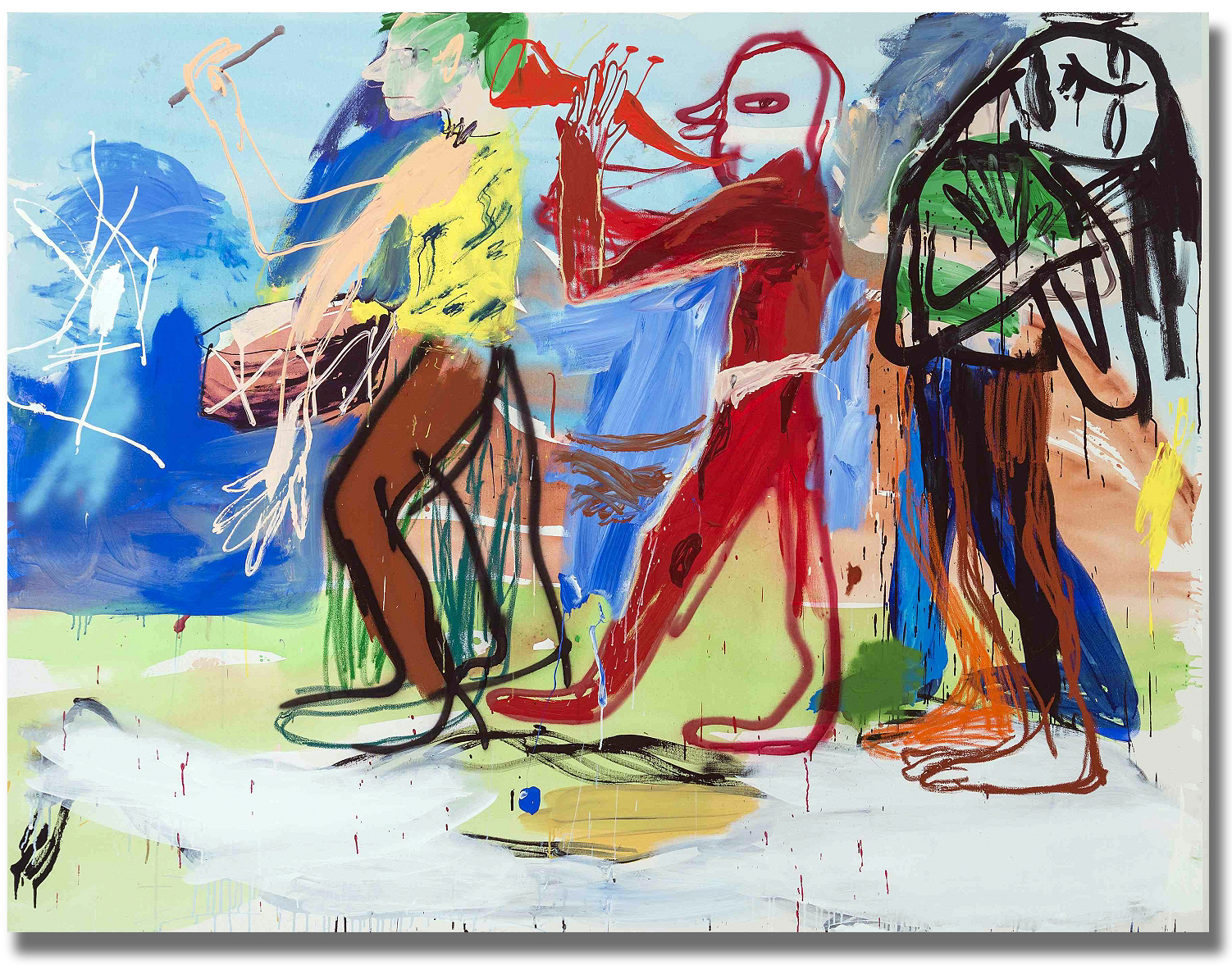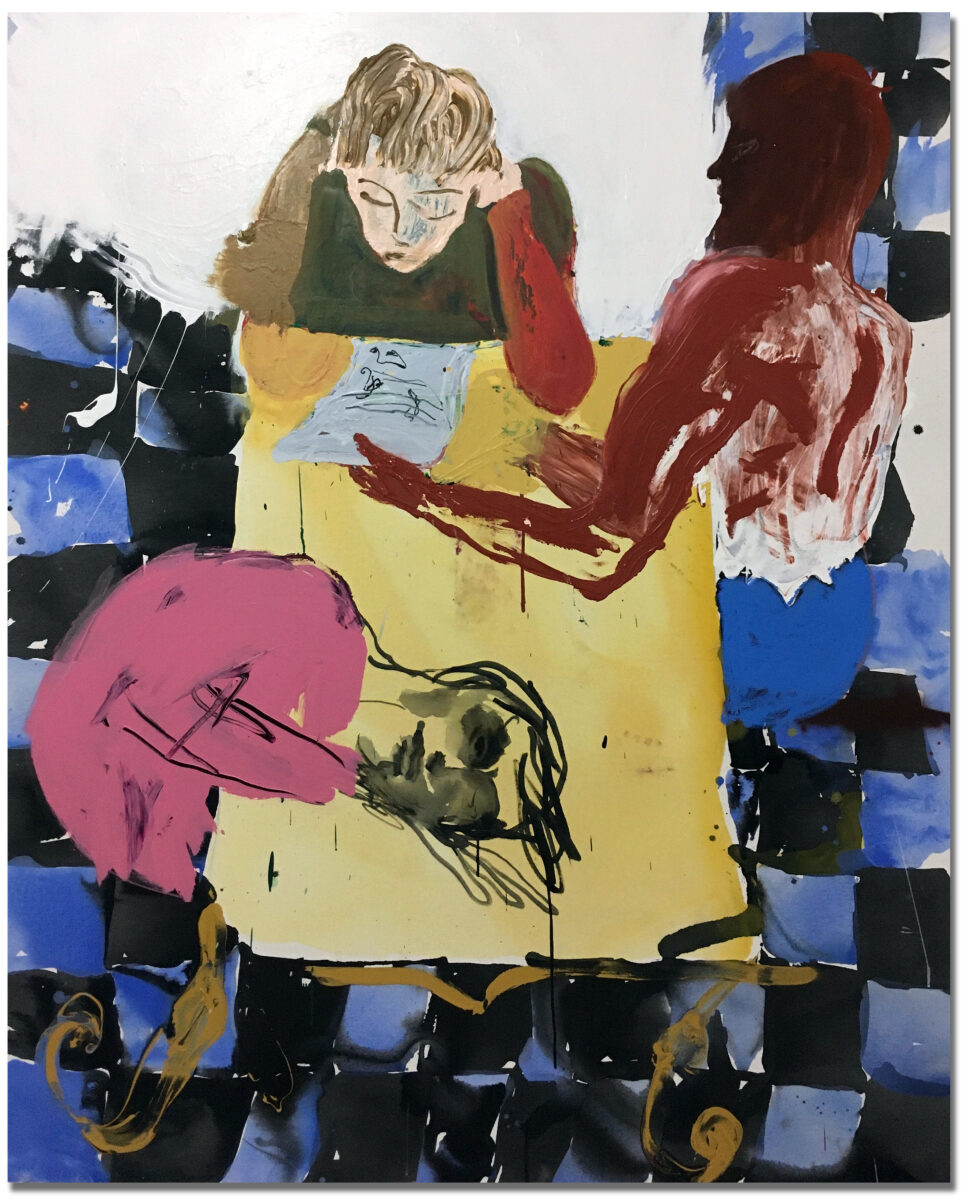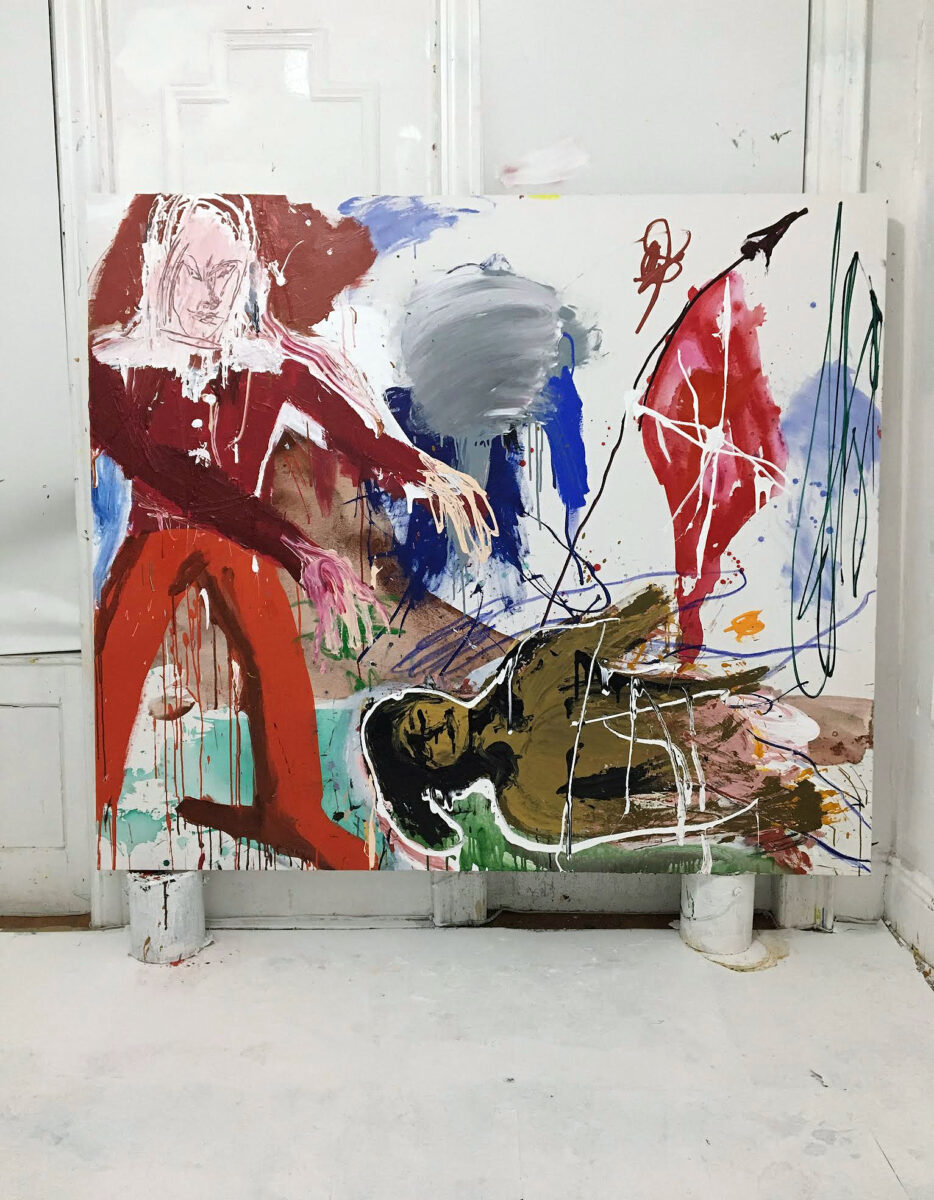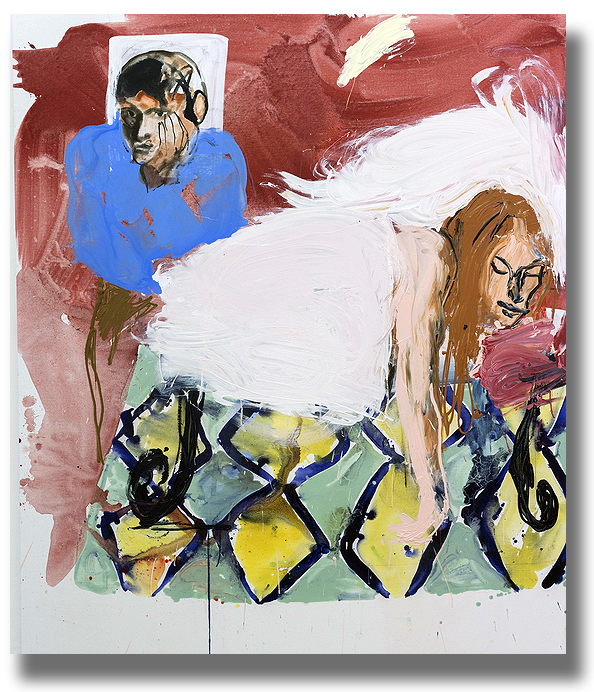
Image courtesy of Fredericks & Freiser
Cristina de Miguel sits down with Erik Sommer to talk about hot Sevillian summers, the immediacy of painting, being honest with herself, and the importance of taking dance breaks.
I am full of contradictions.
(ES) Describe your work for us.
(CdM) My approach to painting is very emotional. I try to think in formal terms also, that is a very important part of my practice, but I try to balance it out with a let-go attitude. Thinking but not thinking too much. There are parts in my paintings that I just accept as they come and others where I don’t let them be so I change, morph or erase them. This is a challenge for me, a contradiction, but I am full of contradictions. I am very interested in the immediacy of painting, looking at a painting and feeling the body making those marks. The timing, parts that are slow and parts that happened very fast. Experiencing marks as time recorders. That is more important for me than other aspects, for example the narrative. I would love to say that my paintings are about time but they are about other things too.

Image courtesy of Fredericks & Freiser
Tell us a bit about your background. Where did you grow up?
I grew up in Southern Spain. During my childhood I used to play long hours in the back corner of my parents’ garden, next to the garage. It was a little world full of all sorts of objects, varnishes, flower pots, rusty metal pipes, tiles, paints, brooms, brushes and cats. Mud, flowers, branches and clothes, old wardrobes, stickers, key chains, and all sort of gadgets and tiny souvenirs tracing the small banalities and glories of my older brothers and sisters, piles of obsolete scholar books, olives, crickets, timbers and a warm shiny sun. I treated all of them equally, perhaps unconsciously. At the age of four I used to show up at home wearing rain boots in the hot Sevillian summer, fancy dresses and all possible combinations of ribbons, laces and belts. I was in full swing of creation, and these funny years provided me with a background of creativity that has been present all my life. The materiality of the paint and the power of its color affected me deeply and consequently they have become an integral part of me.
Where do you live and work now?
I live and work in a railroad apartment in Ridgewood, New York.
How do you think this has influenced your work?
Working in a live/work space brought a new intimacy with the paintings. I can look at them any time I want, revisit them, check how they are doing when I come home from a night out, stop thinking about them and go do something in the living room. Let washes dry while I do laundry -they take a long time, things like that.

Image courtesy of Cristina de Miguel
I try to have an organized work schedule though, and once I enter the studio space I am fully focused, but I can take breaks and then I am home. It feels like a great part of my life is gathered in one single place, and I enjoy that.
Do you remember any artworks or artists as a child that captured your attention?
I remember this board book was passed on to me called Slow and Fast. I was so fascinated with the colors, the shiny surface of the thick pages and the interaction of the colors- very saturated primary colors put together. I wasn’t interested in the story about the turtle going slow and the hare going fast but in the visuals. I still have that book and sometimes I look through it.
Any artists today that you are looking at?
Right now I am looking at New Papua Guinea art and Peloponnesian war artifacts.
What is your normal studio practice like? Any routines or superstitions?
I work in the studio from 10am to 6pm. And I take dance breaks to keep the spirit alive.
What about your working technique? Walk us through how you start and then develop a piece.
It depends on what I am working on but normally I start my paintings with very watered down backgrounds that need to dry overnight. The result is a very thin watercolor-like surface. I start building the painting from there, from general to particular and from thin to thick.
Are you more interested in the process or the end result?
If I am not happy with the result I don’t really care about how wonderful the process was. So yes, I am more interested in the result. I think they both go hand in hand and they have an effect on each other.

Image courtesy of Ruttkowski;68
You have written about creating work that is spontaneous yet exists in a deliberate and planned manner. Can you elaborate on this?
I try to move freely between a demonstration of technical ability and a total rejection of it.
How do you remain challenged?
Being honest with myself and not accepting what I don’t think is good.
What excites you the most about the current art world?
I really enjoy going to my painters friends’ studios and having conversations about painting, or about anything really.
Finally, what is your favorite color?
It depends on the context but I would say primary yellow is a lifelong favorite.
To learn more about Cristina de Miguel visit her website and Instagram page.
